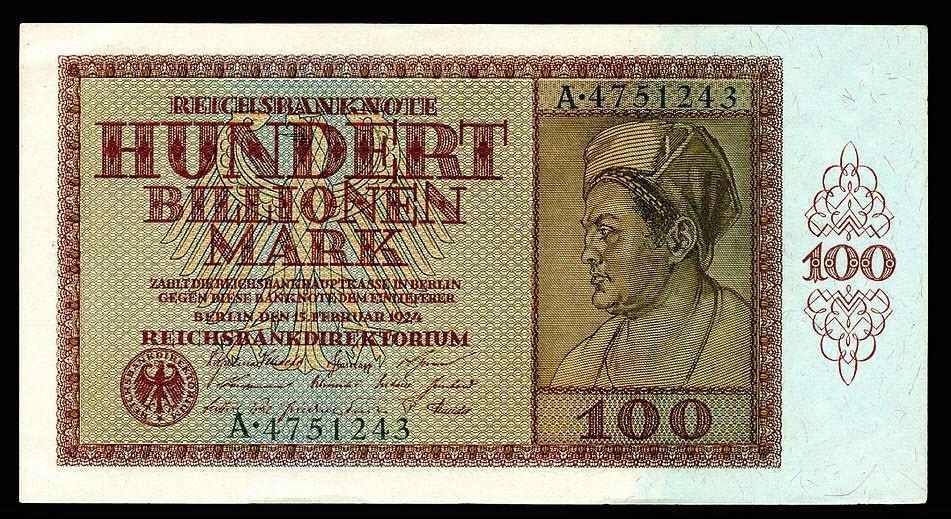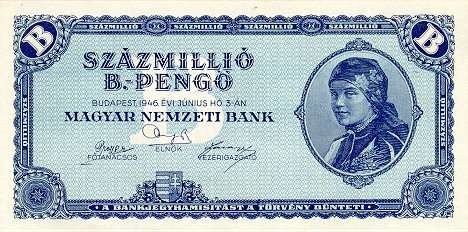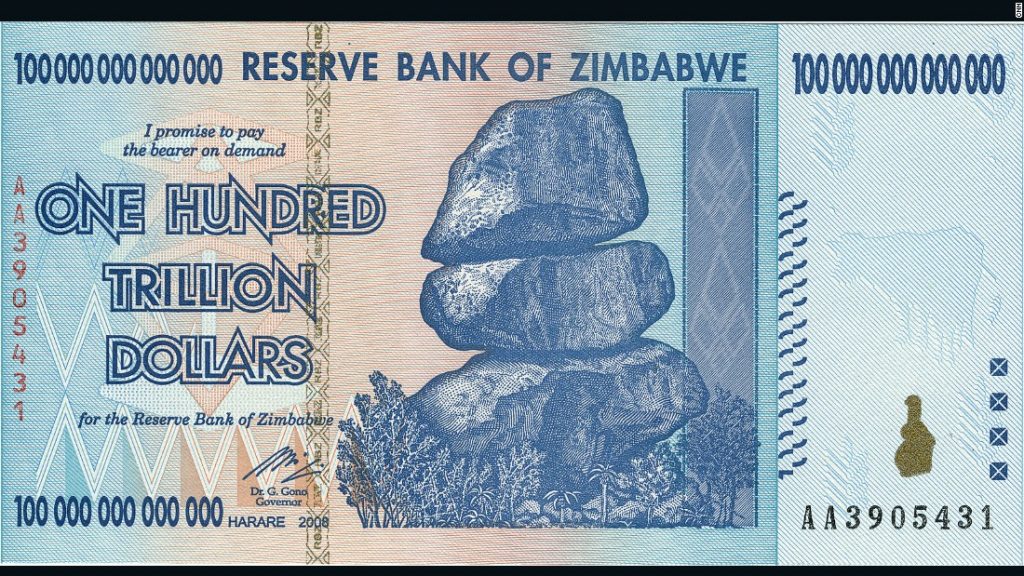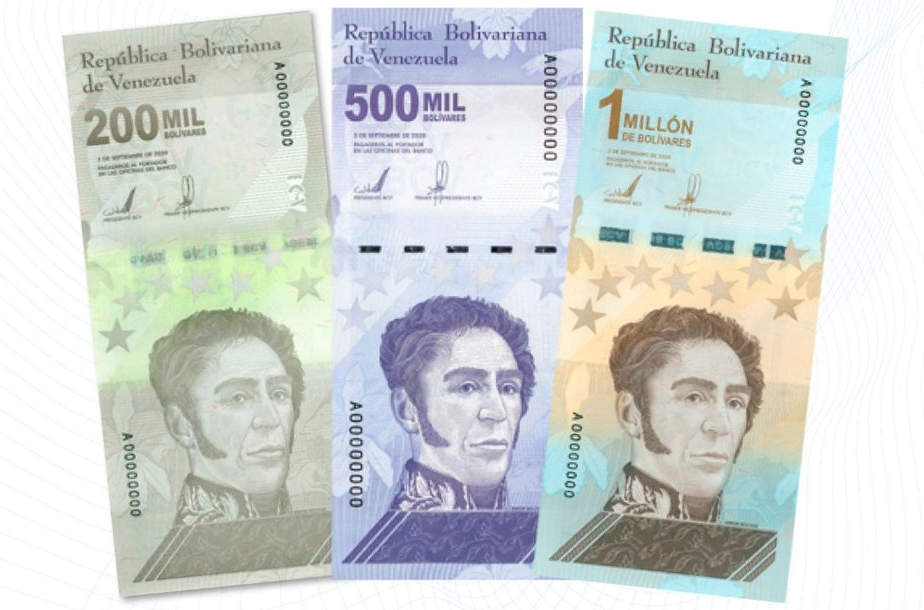DEFINITION:
Hyperinflation is a very high and/or rapidly increasing rate of inflation.
ETYMOLOGY:
“Hyperinflation” is derived from the Greek “huper,” meaning “over,” “beyond,” or “exceeding,” + the Latin “flāre,” meaning “to blow.”
USAGE:
While there is no formal quantitative definition of “hyperinflation” that applies to all times and places, the phenomenon is a lot like pornography—one knows it when one sees it. It is basically inflation that is running out of control.
Under what conditions does hyperinflation occur?
While ordinary inflation has been observed historically in a great variety of times and places, hyperinflation is basically a phenomenon of the twentieth and twenty-first centuries.
Why is that?
One reason is that modern economies have become detached from any commodity store of value, such as silver or gold. Such untethered currencies are known as “fiat” currencies, because their value wholly resides in governmental stipulation and the trust placed in those governments by their citizens.
Fiat currencies permit modern governments to evade the financial discipline imposed by the gold standard. While all governments have a natural desire to spend money they do not have, only governments with fiat currencies can readily do so without immediately causing the devaluation of their currency.
While fiat currencies are a necessary condition for hyperinflation, they are not a necessary one. More often, they merely lead to garden-variety inflation—which eventually causes populations to rebel and governments to return to financial discipline.
For hyperinflation to occur, another factor is required. That factor is social and political chaos.
All of the principal cases of hyperinflation have taken place in countries either devastated by warfare or under the control of an unpopular authoritarian regime.
In such cases, governments may become unwilling or unable to stop the printing presses and return to financial responsibility without unleashing what they perceive to be even worse consequences—their own political demise.
A look at a few of the best-known historical cases will illustrate this point.
Weimar Germany: Between 1920 and 1923, in the aftermath of World War I, Germany experienced what is probably the most-famous case of hyperinflation in history. At its peak, November 1923, the monthly inflation rate reached nearly 30-thousand percent. The highest denomination of the currency released by the government during this episode was the 100-trillion-Mark note.

Hungary: Though the case of Weimar Germany is more famous, the highest-recorded case of hyperinflation occurred in Hungary in 1945–1946, in the aftermath of World War II. In that case, the peak monthly inflation rate, in July 1946, reached an astounding 42-quadrillion (42 × 1015) percent. The highest-denominated currency was the 100-quintillion (10 × 1020)-pengő note.

Zimbabwe: During 2004–2008, Zimbabwe experienced crushing hyperinflation, basically due to the authoritarian character of the government of Robert Mugabe. The peak monthly inflation rate, which occurred in November 2008, was approximately 80 billion percent. The highest denomination of the currency was the 100-trillion-Zimbabwean-dollar note.

Venezuela: The most recent well-known instance of hyperinflation occurred in Venezuela between 2016 and 2018. The statistics for this case are difficult to verify because of international political factors (the government of socialist autocrat Nicolás Maduro is backed by China). But we may safely say that at its peak, in April 2018, the monthly inflation rate reached at least 234 percent. The highest-denominated currency was the 500-million-Venezuelan-bolívar banknote.
